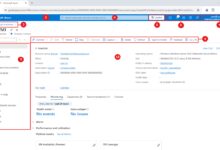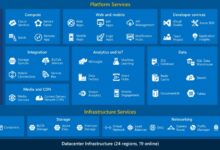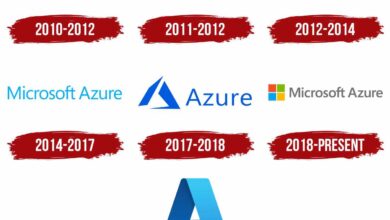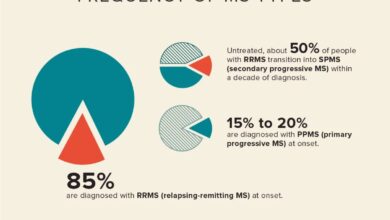Calculate Azure Costs: 7 Powerful Strategies to Master Your Cloud Spending
Want to calculate Azure costs accurately and stop overspending in the cloud? You’re not alone. With Microsoft Azure’s vast array of services, understanding your bill can feel like decoding a secret language. Let’s break it down—clearly, powerfully, and profitably.
Calculate Azure Costs: Why It’s Critical for Cloud Success

Understanding how to calculate Azure costs isn’t just about saving money—it’s about gaining control, optimizing performance, and aligning your cloud usage with business goals. Without accurate cost tracking, even the most efficient organizations risk budget overruns and wasted resources.
Understanding the Risks of Unmanaged Azure Spending
Many companies migrate to the cloud expecting cost savings, only to find their bills skyrocketing. This often happens due to a lack of visibility into usage patterns, idle resources, or unmonitored auto-scaling. According to a 2023 report by Flexera, 32% of cloud spend is wasted annually, with Azure being no exception.
- Unattached disks and unused virtual machines continue to accrue charges
- Development environments left running over weekends
- Lack of tagging leads to untraceable costs across departments
“If you can’t measure it, you can’t manage it.” – Peter Drucker, management expert
How Calculating Azure Costs Drives Business Value
When you calculate Azure costs effectively, you unlock strategic advantages. Finance teams gain accurate forecasting data, IT leaders can justify investments, and developers learn to build cost-aware applications. This transparency fosters accountability and innovation.
- Enables chargeback and showback models for internal teams
- Supports compliance with financial audits and governance policies
- Improves ROI on cloud migration initiatives
Calculate Azure Costs with the Total Cost of Ownership (TCO) Model
Before you even deploy a single resource, you should calculate Azure costs using the Total Cost of Ownership (TCO) model. This helps compare on-premises infrastructure with cloud alternatives, factoring in hidden expenses like maintenance, power, and downtime.
What Is the Azure TCO Calculator?
Microsoft provides a free Azure TCO Calculator that allows you to input your current infrastructure details and receive a detailed projection of potential savings. It considers variables such as server count, storage needs, network bandwidth, and labor costs.
- Compares 5-year costs between on-premises and Azure
- Includes assumptions about hardware refresh cycles and downtime
- Exports reports for stakeholder presentations
Limitations of the TCO Calculator
While powerful, the TCO calculator has limitations. It doesn’t account for operational inefficiencies post-migration or unexpected usage spikes. It also assumes optimal configuration, which may not reflect real-world scenarios.
- Does not include ongoing management overhead in the cloud
- May underestimate data transfer and egress fees
- Relies on user-provided estimates, which can be inaccurate
Use the Azure Pricing Calculator to Estimate Before You Deploy
One of the most practical tools to calculate Azure costs is the Azure Pricing Calculator. This interactive tool lets you build a virtual environment and see real-time cost estimates before committing any resources.
Step-by-Step Guide to Using the Azure Pricing Calculator
To calculate Azure costs using the pricing calculator, follow these steps:
- Select the services you plan to use (e.g., Virtual Machines, Blob Storage, Azure SQL)
- Configure specifications like region, instance size, and redundancy options
- Adjust usage hours (e.g., 24/7 vs. part-time workloads)
- Add networking components like load balancers and bandwidth estimates
- Download or share the estimate with your team
This tool is especially useful for architects and project managers during the planning phase.
Pro Tips for Accurate Cost Estimation
To get the most accurate results when you calculate Azure costs with the pricing calculator:
- Use realistic usage patterns—not peak loads—as baselines
- Factor in data egress fees, which can be significant for global applications
- Include backup and disaster recovery components in your estimate
- Update your estimates quarterly as requirements evolve
Calculate Azure Costs in Real-Time with Cost Management + Billing
Once your resources are live, the real work begins. Azure’s native Cost Management + Billing service is your go-to platform to monitor, analyze, and optimize spending in real time.
Navigating the Cost Management Dashboard
The Cost Management dashboard provides a centralized view of your spending across subscriptions, resource groups, and services. You can drill down into daily, weekly, or monthly trends and set up custom views based on tags or departments.
- View cost trends with interactive charts and filters
- Compare actual spend vs. budget forecasts
- Identify top cost drivers by service or region
Setting Up Budgets and Alerts
One of the most powerful features is the ability to set budgets. When you calculate Azure costs proactively, you can define thresholds and receive email or SMS alerts when spending exceeds predefined limits.
- Create budgets at the subscription or resource group level
- Set alert thresholds at 50%, 75%, and 100% of budget
- Integrate with Azure Monitor and Logic Apps for automated responses
“Budgets are not about restriction—they’re about awareness and alignment.” – Cloud Financial Officer, Fortune 500 Tech Firm
Tagging Resources: The Secret to Accurate Cost Allocation
If you want to calculate Azure costs by team, project, or environment, tagging is non-negotiable. Tags are key-value pairs attached to resources that allow you to categorize and track spending with precision.
Best Practices for Effective Resource Tagging
To maximize the value of tagging, follow these best practices:
- Establish a company-wide tagging policy before deployment
- Use consistent keys like
Environment(Dev, Test, Prod),Department,Project, andOwner - Enforce tagging through Azure Policy to prevent untagged resources
- Regularly audit and clean up outdated tags
How Tags Enable Chargeback and Showback Models
With proper tagging, finance teams can generate detailed reports showing which departments or projects are consuming the most resources. This enables:
- Chargeback: Billing departments for their actual cloud usage
- Showback: Providing visibility without direct billing, fostering accountability
- Performance benchmarking across teams
Leverage Azure Advisor for Cost Optimization Recommendations
Azure Advisor is a personalized cloud consultant that analyzes your environment and provides actionable recommendations—including cost savings. It’s one of the easiest ways to continuously calculate Azure costs and find optimization opportunities.
Top Cost-Saving Recommendations from Azure Advisor
Azure Advisor regularly scans your environment and suggests:
- Downsizing underutilized virtual machines (e.g., from D4 to D2)
- Deleting unattached disks and unused public IPs
- Reserving instances for long-term workloads to save up to 72%
- Switching to low-priority VMs for non-critical batch jobs
Automating Cost Optimization with Advisor Integration
You can integrate Azure Advisor recommendations with Azure Automation or PowerShell scripts to apply fixes automatically. For example, a script can shut down non-production VMs during off-hours based on Advisor insights.
- Use Azure CLI or REST API to fetch Advisor recommendations
- Build custom dashboards using Power BI and Advisor data
- Schedule weekly reviews to track progress on cost-saving actions
Advanced Techniques to Calculate Azure Costs with APIs and Scripts
For enterprises needing granular control, Azure provides REST APIs and SDKs to programmatically access cost data. This is ideal for integrating cloud costs into internal financial systems or building custom reporting tools.
Using the Azure Cost Management API
The Azure Cost Management API allows you to retrieve detailed cost data by date range, dimension, or scope. You can pull data into Excel, Power BI, or ERP systems for deeper analysis.
- Query actual and forecasted costs programmatically
- Generate custom reports for executives or auditors
- Combine cost data with performance metrics for holistic insights
Sample Script to Export Monthly Costs
Here’s a simple PowerShell script to export monthly Azure costs:
# Login to Azure
Connect-AzAccount
# Set subscription
Set-AzContext -SubscriptionId "your-subscription-id"
# Get cost data
$cost = Get-AzConsumptionUsageDetail -StartDate "2024-01-01" -EndDate "2024-01-31"
# Export to CSV
$cost | Export-Csv -Path "azure_costs_jan2024.csv" -NoTypeInformationThis script can be scheduled to run monthly, ensuring consistent cost tracking.
Third-Party Tools to Calculate Azure Costs More Effectively
While Azure’s native tools are robust, third-party solutions offer enhanced analytics, multi-cloud support, and AI-driven insights. These tools are ideal for organizations managing complex, hybrid, or multi-cloud environments.
Top Third-Party Cost Management Tools
- Azure Cost Management by Cloudability (now part of AWS): Offers advanced forecasting and anomaly detection.
- Spot by NetApp: Provides rightsizing, reservation planning, and automated savings actions.
- CloudHealth by VMware: Delivers comprehensive cost, security, and performance monitoring.
- Binadox: Real-time SaaS and IaaS cost tracking with AI-powered optimization.
How to Choose the Right Tool for Your Needs
When evaluating third-party tools to calculate Azure costs, consider:
- Integration depth with Azure services
- Support for multi-cloud environments
- Automation capabilities (e.g., auto-shutdown, scaling)
- Reporting flexibility and dashboard customization
- Total cost of ownership of the tool itself
Common Pitfalls When Trying to Calculate Azure Costs
Even experienced teams make mistakes when calculating Azure costs. Recognizing these pitfalls early can save thousands in wasted spend.
Overlooking Egress and Data Transfer Fees
Data egress—the cost of moving data out of Azure—is often underestimated. While inbound data is free, outbound transfers incur charges, especially across regions or to the internet.
- Transferring 1TB out of Azure to the internet can cost $90+ depending on region
- Replicating data across regions adds hidden costs
- CDN usage can reduce egress fees significantly
Ignoring Reserved Instances and Savings Plans
Reserved Virtual Machine Instances offer up to 72% savings compared to pay-as-you-go pricing. Yet, many organizations fail to commit, missing out on massive savings.
- 1-year reservation: ~45% savings
- 3-year reservation: ~72% savings
- Savings Plans offer flexible commitment across compute services
Failure to Decommission Old Resources
Orphaned resources—like unattached disks, unused NICs, or abandoned storage accounts—continue to generate charges. Regular cleanup is essential.
- Use Azure Policy to enforce auto-deletion after 30 days of inactivity
- Run monthly cleanup scripts
- Assign ownership tags to ensure accountability
Forecasting Future Azure Costs with AI and Machine Learning
The future of calculating Azure costs lies in predictive analytics. Azure’s built-in forecasting tools use machine learning to project spending based on historical trends, helping you anticipate and plan for future needs.
Using Azure Cost Forecast Reports
In the Cost Management portal, you can generate forecasts up to 30 days ahead. These reports use statistical models to predict spending based on past usage, seasonal patterns, and current trends.
- Identify potential budget overruns before they happen
- Adjust resource allocation proactively
- Support CFO-level financial planning
Enhancing Forecasts with Custom ML Models
For advanced users, Azure Machine Learning can be trained on historical cost data to build custom forecasting models. These can incorporate external factors like marketing campaigns or product launches that impact cloud usage.
- Integrate with Azure Data Lake for large-scale cost data storage
- Use Python libraries like Prophet or ARIMA for time-series forecasting
- Deploy models as APIs for real-time predictions
Team Collaboration and Governance in Cost Management
Calculating Azure costs isn’t a one-person job. It requires collaboration between finance, IT, development, and leadership teams. Establishing governance frameworks ensures accountability and sustainability.
Building a Cloud Center of Excellence (CCoE)
A Cloud Center of Excellence brings together stakeholders to define policies, standards, and best practices for cloud usage—including cost management.
- Define cost governance policies and enforcement mechanisms
- Conduct regular cloud cost review meetings
- Provide training for developers on cost-aware architecture
Role-Based Access and Cost Reporting
Use Azure Role-Based Access Control (RBAC) to ensure teams only see costs relevant to their responsibilities. Finance gets high-level summaries, while engineers see detailed resource breakdowns.
- Assign roles like
Cost ReaderorCost Contributor - Customize dashboards per role
- Integrate with Power BI for self-service reporting
How do I start calculating my Azure costs today?
Begin by accessing the Azure Pricing Calculator to estimate your planned usage. Then, enable Cost Management + Billing for your subscription and set up your first budget. Finally, implement a tagging strategy to ensure future costs are trackable.
What’s the most common mistake when trying to calculate Azure costs?
The biggest mistake is focusing only on compute costs while ignoring storage, networking, and egress fees. A holistic view is essential for accurate calculations.
Can I automate cost optimization in Azure?
Yes. You can use Azure Automation, Logic Apps, or third-party tools like Spot to automatically shut down non-production resources, resize underutilized VMs, and purchase reserved instances.
Are there free tools to calculate Azure costs?
Absolutely. Microsoft offers the Azure Pricing Calculator and Cost Management + Billing dashboard for free. Azure Advisor also provides cost recommendations at no extra charge.
How often should I review my Azure costs?
At minimum, review your costs monthly. For dynamic environments, weekly reviews are recommended. Set up alerts to monitor daily spikes.
Learning how to calculate Azure costs is not a one-time task—it’s an ongoing discipline. From using the Azure Pricing Calculator and TCO model to leveraging Cost Management, tagging, and third-party tools, every strategy plays a role in gaining financial control. By combining native tools, automation, and team collaboration, you can transform cloud spending from a mystery into a strategic advantage. Start today, stay proactive, and make every dollar in the cloud count.
calculate azure costs – Calculate azure costs menjadi aspek penting yang dibahas di sini.
Recommended for you 👇
Further Reading:









